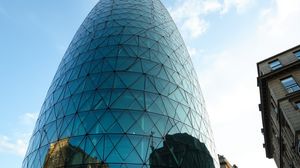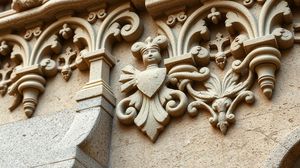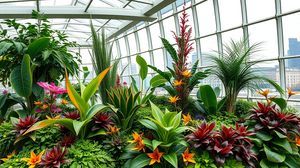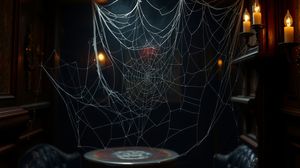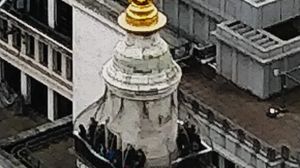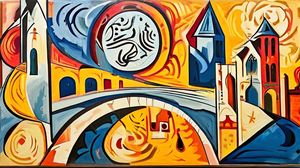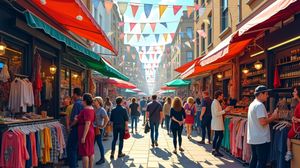
The Leadenhall Building, affectionately known as "The Cheesegrater" due to its distinctive wedge shape, is an iconic skyscraper in the City of London. Designed by Richard Rogers and built by British Land and Oxford Properties, the building stands at an impressive 225 meters with 48 floors, making it one of London's tallest structures.
Completed in 2014, The Leadenhall Building is a triumph of modern architecture, showcasing a striking tapering design that maximizes views of St Paul's Cathedral and the River Thames while minimizing its physical footprint. Its unique shape is not just visually appealing but also engineered to reduce the impact on the view of nearby historical landmarks.
The building is home to several prestigious businesses and has earned a reputation as a premier location for commercial space in London. Despite its sleek, modern design, it pays homage to the historical fabric of the city by respecting the sightlines and aesthetics of its surroundings.
One fascinating aspect of The Leadenhall Building is its gallery-like lobby, which is home to several pieces of impressive public art, including the work of renowned artists. This makes it not just a business hub but also a cultural destination, attracting art enthusiasts and curious visitors alike.
An unusual and interesting fact about The Leadenhall Building is its construction method. Instead of being constructed in a traditional floor-by-floor manner, many components were prefabricated off-site and later assembled on-site like a giant jigsaw puzzle. This innovative approach reduced construction time and minimized disruption in the bustling city environment.
Visitors may find The Leadenhall Building particularly striking at night. The building's lighting design emphasizes its angular silhouette, creating a stunning presence against the London skyline. It highlights the structure's innovative architecture, making it a favorite subject for photographers and architecture aficionados.

Making the Most of Your Visit:
If you're visiting The Cheesegrater, make sure to step inside the lobby. It's not the kind of place where you'll feel out of place popping in just to look, and they've got some fantastic art installations that change from time to time. It's a mini art gallery in itself!
Take a moment to admire the building from across the street at St Helen's Square. You get a brilliant view of its tapering design and can really appreciate why it's called The Cheesegrater. It's like seeing a piece of modern art against the backdrop of the historical City.
If you're a fan of architecture photography, try visiting at dusk when the external lights come on. The angular design of the building is beautifully highlighted, creating some dramatic photo opportunities that really capture the essence of London's modern skyline mixed with its historical streets.
Whether you're in the area for business or pleasure, grab a coffee at one of the nearby cafes and enjoy the buzzing atmosphere of the City. Leadenhall Market is just around the corner, and it's a great spot to relax while soaking up the historic charm that contrasts perfectly with The Cheesegrater's contemporary architecture.
Although the public viewing platform isn't open in The Cheesegrater, there are plenty of nearby skyscrapers with views that include it. Consider visiting The Sky Garden or The Shard for a panoramic perspective that includes the distinctive silhouette of this iconic building.

Visiting Times & Costs:
The Leadenhall Building, known as "The Cheesegrater", is primarily an office building, hence it is not generally open to the public except for its lobby area.
Opening Hours:
- The lobby area is typically accessible during business hours on weekdays. However, visiting times can vary, and it is advisable for visitors to check for any specific tours, events, or art exhibitions that may offer additional access.
Entrance Fee:
- There is no entrance fee for accessing the lobby and viewing the art installations within it.
Accessibility:
- The building is equipped with ramps and lifts, providing access for visitors with mobility issues to the publicly accessible areas.

Address & Map:

Nearby:



